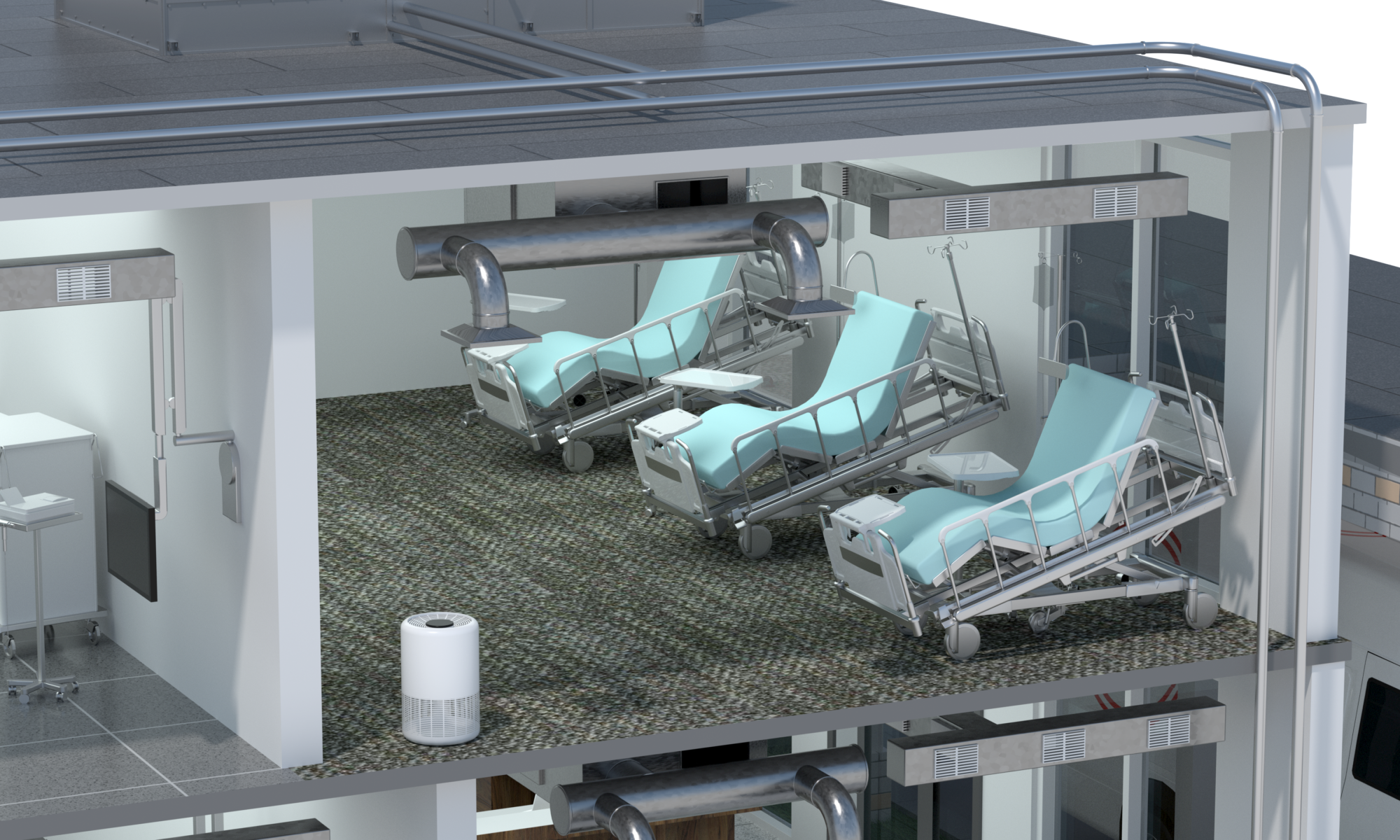Automatic doors slide open, and the crisp, filtered air of the hospital lobby replaces the heat and humidity outside. A steady hum of activity fills the space—nurses at workstations, visitors checking in, patients moving through hallways. The air feels comfortable, the lighting bright but not harsh, and everything seems to run seamlessly. Behind the scenes, an intricate network of sensors and controls is constantly working to maintain these conditions.
Hospitals rely on precise environmental control to keep patients and staff safe. Air flows at the right rate, temperature and humidity stay balanced, and critical systems are constantly monitored. Behind the scenes, DwyerOmega sensors help ensure these conditions are met in patient rooms, operating suites, and beyond.
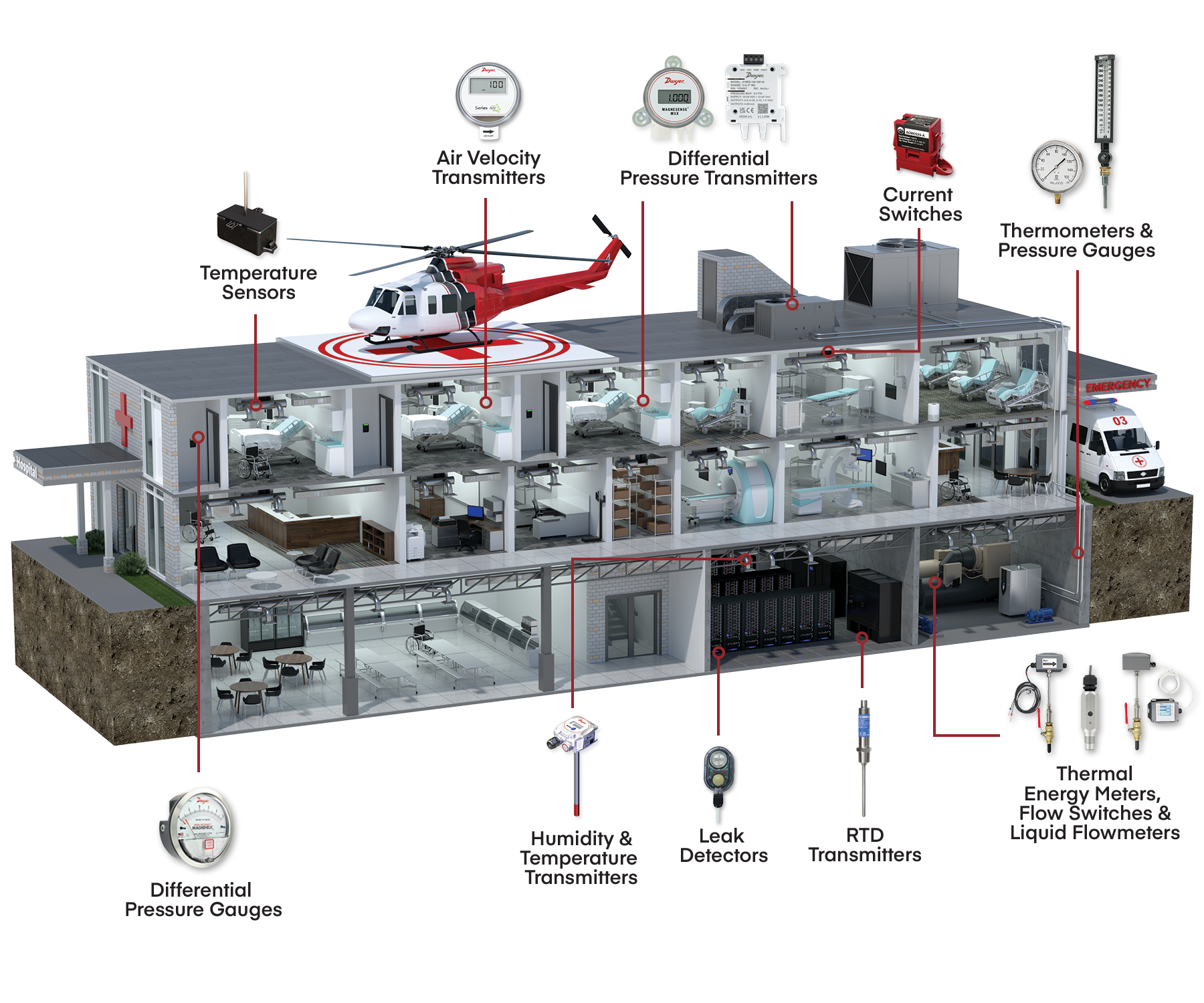 DwyerOmega offers a wide range of sensor solutions for hospitals, monitoring everything from pressure and air quality to leak detection and electrical systems. Among these, maintaining indoor air quality (IAQ) is essential in creating a healthy environment.
DwyerOmega offers a wide range of sensor solutions for hospitals, monitoring everything from pressure and air quality to leak detection and electrical systems. Among these, maintaining indoor air quality (IAQ) is essential in creating a healthy environment.
Maintaining proper IAQ involves careful control of temperature, humidity, airflow, and air purity to support patient and staff well-being. Here are some of the IAQ-focused products from our Dwyer brand, which is part of our broader portfolio designed to support safe, efficient healthcare environments.
Our temperature and humidity sensors are used to ensure a comfortable environment for building occupants. Beyond comfort, proper humidity also plays a critical role in IAQ. Dwyer’s humidity sensors can help ensure that proper humidity levels are maintained and assist in minimizing the spread of viruses/diseases and preventing mold growth.
Series RHP-E/N, RHPLC, & RHP-D Humidity/Temperature Transmitters
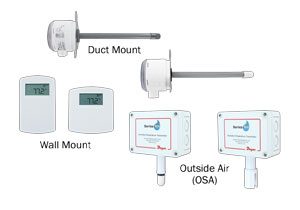
Dwyer’s humidity/temperature sensors feature both duct & wall mount options to fit a variety of application needs. They utilize a capacitive polymer sensing element to deliver a proportional analog output, and offer a wide selection of passive RTD or thermistor temperature sensors.
Series TE, TE-WSS, & TE-E/N Temperature Sensors
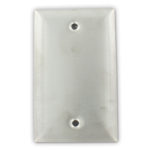
Dwyer’s temperature sensors are available in either duct, wall, or immersion mount configurations. They can be used to monitor the air or water temperature throughout a building management system or an air handler unit, or the ambient temperature in a room. Duct and immersion sensors are available with probe lengths up to 18 inches, with thermistor or RTD outputs.
Series CDT, CDTR, & CDTA Transmitters
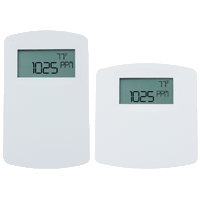
The Series CDT accurately monitors the carbon dioxide concentration and temperature in indoor environments to help achieve energy savings, utilizing a single beam dual wavelength non-dispersive infrared sensor for increased sensor accuracy. The CDTR introduces additional functionality to also measure relative humidity, reducing installation time and lowering material cost. Both models feature universal transmitter outputs, and various RTD or thermistor temperature sensor options. The Series CDTA combines carbon dioxide, humidity, temperature, and temperature set point with override, and features Modbus® RTU or BACnet MS/TP outputs.
Series CDTV Carbon Dioxide/Volatile Organic Compound (VOC) Transmitter
The Series CDTV senses both CO2 and volatile organic compounds (VOC), allowing it to detect fumes that may need to be exhausted in lower occupancy periods.
Series AVUL & AVLV Air Velocity Transmitters

CDC and ASHRAE guidelines state that the total volume of air in an isolation room needs to change over a minimum of 6 to 12 times per hour depending on when the hospital was constructed. Dwyer’s Series AVLV and AVUL air velocity transmitters help to meet these standards. These units provide a linear velocity output signal that can be paired with a building management system. In particular, the lower ranges of the AVLV high accuracy units are ideal for applications in quality intensive environments.
Dwyer’s IAQ sensors help improve environments for a safer, sustainable world. To learn more about any Dwyer® products, please visit the Dwyer website: https://www.dwyer-inst.com/
Beyond IAQ, hospitals depend on precise monitoring to keep every system running safely and efficiently. From pressure control to leak detection, DwyerOmega solutions help maintain optimal conditions throughout the entire facility.
Learn more about our full range of solutions at DwyerOmega’s website: https://www.dwyeromega.com/

